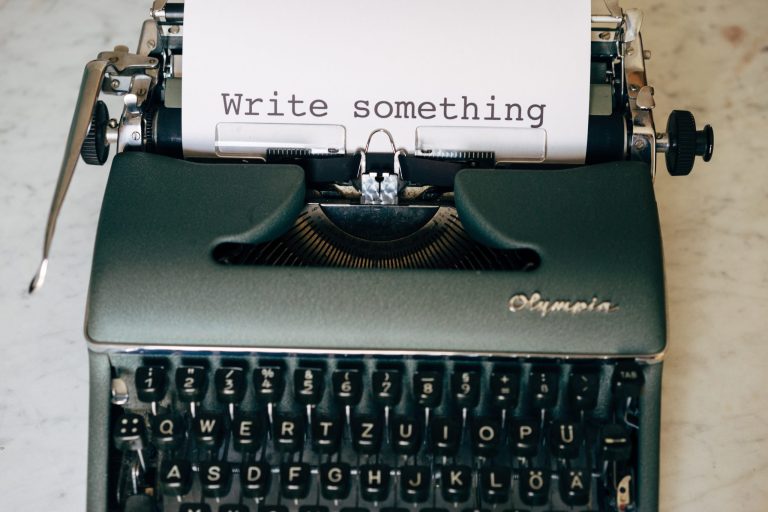The Power of Dialogue: More Than Just Spoken Words
[Dialogue Doctor Jeff Elkins joins me in this special event on Tuesday September 23 at 10:00 a.m. Pacific! If you’re a fiction writer or penning creative nonfiction, treat yourself to a 2-hour intensive master class that will help you supercharge the dialogue in your scenes. Enroll HERE to attend the master class.]
Dialogue is perhaps the most potent element in a fiction writer’s toolkit. Through dialogue, writers can reveal character, escalate conflict, build microtension, layer in mystery, and propel the plot—all within the spoken (or unspoken) exchanges between characters. It’s this multidimensional utility that makes dialogue worthy of careful craft.
Why Dialogue Matters (and Why Writers Should Hone It)
Yes, dialogue should always serve more than one purpose. It’s not simply a tool for expositional information about the plot—it’s a dynamic space where character, tension, and subtext converge.
Fiction writers need techniques to utilize dialogue to make every line do double (or even triple) duty. Here are 4 ways dialogue achieves that:
1. Character Revelation Without “Telling”
Dialogue offers a window into personality, worldview, and emotional landscape—without resorting to overt “telling” description. A clipped response or an offhand joke can speak volumes about pride, insecurity, or suppressed grief.
When characters speak—and when they pause, hesitate, stumble, or pivot—we glean their histories, priorities, and secrets. And the best part? This inference happens invisibly, organically, without narrative hand-holding.
2. Conflict and Stakes
Dialogue can sharpen conflict. A thrown accusation, a raised voice, or a deliberate silence can ratchet up stakes faster than a paragraph of internal monologue.
Microtension thrives in the spaces between words (if you aren’t knowledgeable about microtension, study up! My course on writing a commercially successful novel explores how to create microtension strategically in your story). A question that’s answered too slowly, or not at all, creates suspense. Dialogue can be an engine of friction, thrusting plot forward through emotional torque.
3. Mystery and Subtext
Great dialogue rarely states the obvious; it suggests, hints, leans. Characters often say one thing and mean another—or refuse to answer at all.
These unspoken spaces infuse mystery. A character can deflect, equivocate, or stonewall, creating wonder in the reader: What’s really going on here? What are they hiding? That inquisitiveness is compelling (and, again, creates microtension).
4. Pacing and Voice
Dialogue speeds up narrative and provides an excellent vehicle for voice. A Southern drawl, an academic stutter, a clipped corporate tone—dialogue carries dialect and attitude in a way prose can only approximate. Voice becomes character, and character becomes immediately present.
Dialogue as an Alternative to Exposition
One of the most elegant uses of dialogue is as an alternative or enhancement to character description. Instead of stating “Rebecca was brusque and efficient, never staying still,” you might show this through a short, pared-down exchange:
“You’re five minutes late,” she said, checking her wristwatch.
“Traffic,” he replied, out of breath.
She didn’t wait for a justification. “Start the meeting.”
Without waving a banner that says “Rebecca is brusque,” the dialogue plus the gesture do the heavy lifting. This is show, don’t tell at its finest.
Dialogue-Heavy Scenes
Some novels lean heavily on dialogue, and nearly all novels need scenes like this at important moments. When done well, this can create immediacy, intimacy, and readability. However, there are pitfalls:
- Loss of Setting and Orientation
When a scene is all talk, readers may become unmoored: Where are they? What time of day is it? Who else is in the room? Dialogue can bring out these details, but you need to be careful to avoid nonstop dialogue without allowing for showing the setting. A line or two of description—lampshade, the hiss of steam, a passing siren—can root the reader without yanking them out of the conversation. - Monotony Without Beats
Endless back-and-forth, especially rapid-fire dialogue, can feel like a Ping-Pong match that never breathes (though, there may be situations that merit such dialogue). Unless the cadence itself is a stylistic device, it’s smarter to intercut short descriptions of posture, gestures, expressions—bits that enrich and slow the pace in just the right way to heighten emotion (the characters’ and the readers’!).
Getting the Balance Right: Tips for Punchy Dialogue
Here are some practical guidelines to craft dialogue that sings:
- Keep it Trim
Real conversations are full of fillers, hesitations, and detours. Fictional dialogue is artifice. Forget the “umms” and “uhhs” unless they serve a clear purpose (nervousness, confusion). Aim for lines that convey meaning or tone, fast. - Let Subtext Steer the Ship
Most interesting dialogue is not what is said—but what’s not said. Think emotional layering: the real question is never asked, the compliment is backhanded, the answer is evasive. Let the reader navigate the iceberg beneath the words. - Embed Clarity within Ambiguity
Even when dialogue leans into subtext, it still needs to convey something—mood, motivation, plot seed. If it’s too cryptic, the reader disengages. Balance is key. - Use Beats for Texture
Small actions—licking lips, resting a mug, glancing at a phone—serve as beats that slow the pace, heighten tension, or deliver irony. Beats reveal emotion without spelling it out. - Reflect Distinct Voices
Everyone has a different rhythm, lexicon, and style of speech. An anxious teenager, a corporate executive, and a retired war veteran sound different. Listen carefully to how people around you speak (not for copying verbatim but for cadence, tone, pattern). - Let Dialogue Drive Plot, Not Just Commentary
Every line should move something forward—an idea, a reveal, a question, a conflict. Avoid filler chatter unless it reflects character or deepens stakes!
Great fiction dialogue is stylized. It compresses—but also amplifies. Writers aren’t striving for realism; they’re chasing resonance. Subtext, rhythm, echoing themes—these bring authenticity more than mimicking actual speech patterns. Real people repeat themselves and over-explain. But be careful not to be exact in mimicking real speech.
Craft Your Dialogue Strategically
Dialogue is not secondary. It is the architecture of engagement, the invisible scaffolding that holds up emotional arcs, plot pivots, and character revelation. When well-crafted, dialogue accomplishes in a line what prose might take pages to explain—and it does so with immediacy, intimacy, and style.
The challenge is that great dialogue is deceptively hard. Writers must condense real speech, infuse it with weight, shape it for effect, and ensure every line resonates. Balance is key: between what’s said and unsaid, the rhythm of speech and the beats of silence, the lift of voice and the ground of setting.
So let dialogue do the heavy lifting. Let it reveal, provoke, unsettle, seduce, sustain pace, and enrich subtext. Let it be sharp—but also allow the cracks, the pauses, the withheld emotion. In those spaces between words, the real story breathes.
Because dialogue is not just speech. It’s the pulse of fiction.
Don’t miss the upcoming master class on dialogue!

Dialogue Doctor Jeff Elkins joins me in this special event on Tuesday September 23 at 10:00 a.m. Pacific!
If you’re a fiction writer or penning creative nonfiction, treat yourself to a 2-hour intensive master class that will help you supercharge the dialogue in your scenes. Enroll HERE to attend the master class.
In these two hours together on Zoom, you’ll learn new ways to tackle dialogue and make it powerful in your scenes. For fiction writers of any level, who want to write realistic, effective dialogue.
The session will be recorded, so if you can’t make it, no worries. Everyone gets lifetime access to the recording and handouts (you’ll be sent the access link after the session).
Cost: $36 US. Book your spot on Eventbrite and tell your friends!
Featured Photo by Christopher Stites on Unsplash











